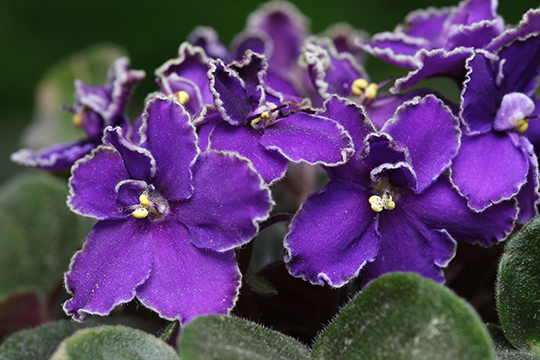“Cary” and “Color” both start with the letter “C,” so it should be no surprise that there are many “C” plants with colorful leaves that can add long-lasting visual zing to local landscapes awash in green during the summer. Here are my favorites that will be easily found in area garden centers this spring:
Canna
Grown from rhizomes, this popular perennial used to be favored for its flowers, but recent introductions, such as ‘Tropicana’, with its thin, striped leaves screaming in bright yellows, oranges and greens, and ‘Australia’, which smolders in a dusky burgundy-black, now stop the show with their strong foliage statements from spring until fall.
Colocasia
Also known as “elephant ears” — its huge leaves show why — this large, dramatic perennial is usually seen in shades of green, but many new introductions have gone to the dark side with leaves dipped deeply in black. ‘Diamond Head’ and ‘Black Magic’ are typical, easy-to-find cultivars. This tuberous plant is a popular addition to large container plantings and water gardens.
Coleus
The cultivars (and there are hundreds) of this eye-catching annual vary wildly in leaf shape and (especially) color combinations — most of which look like explosions in a paint factory. They are the perfect plants to perk up a summer border garden or container planting.
Croton
Orange, red, yellow, green, purple — these are croton’s colors, which come in streaks, splotches, splats, stripes and speckles on foliage that varies wildly in width and shape. Croton is known as a dependable houseplant, but this dazzler is now being found more and more as a potted outdoor accent on decks and porches during the summer.
Caladium
A fancy plant that has always been a steady performer in lightly shaded areas, caladium shows off arrow-shaped leaves that light up the landscape with splashes in various combinations of red, green, pink, cream and white. Although caladium is usually treated as an annual in this area, its tubers can be dug up and stored over the winter.
L.A. Jackson is the former editor of Carolina Gardener magazine. Want to Ask L.A. a question about your garden? Contact him by email at lajackson1@gmail.com.

To Do in the Garden: January
- Keep the colors of Christmas bright during the gray months of winter by watering such leftover indoor Yuletide plants as amaryllis, Christmas cactus, Christmas cherry and poinsettia when the upper half-inch of soil in the pots is dry.
- Many outdoor flowering plants such as hellebores, winter daphne, wintersweet, sweetbox, winter honeysuckle and witch hazel will begin showing off at local nurseries this month, so if you forsake your friendly garden center until the spring, you could miss out on picking up some of these winter-blooming wonders.
- Salt stains from fertilizers taking the pretty away from your clay pots? Wash them with vinegar to restore their original look.
- Is your winter landscape looking too brown, too gray, too dull? Liven it up a bit by applying brightly colored spray paints to dried grasses and empty seedpods.
- If you want to enjoy some prime examples of natural winter color, stop by a local botanical garden or arboretum to see how conifers and other evergreens are lighting up the chilled landscape with various shades of green, gold, burgundy, copper and bronze.
TIMELY TIP
African violets need to be watered, of course, but the chlorine typically found in city tap water can cause leaf spots and fewer flowers. An easy remedy is to simply leave a bottle of tap water out overnight to allow the chlorine to dissipate. As alternatives, you can also use rainwater or bottled distilled water. Either, by the way, are handy if you have hard (alkaline) tap water, which is also not good for African violets because it raises the pH of the potted soil these acid-loving plants call home.






